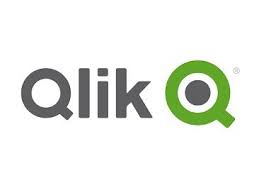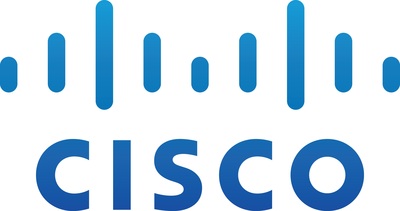Enterprise Communication Infrastructure Market Expected to Reach $354.2 Bn by 2032
The combination of
hardware, software, and services that promote communication and collaboration
within businesses is referred to as the enterprise's
communication infrastructure. This covers tools including phone
systems, video conferencing applications, email servers, and message services.
The market is being propelled by enterprises' growing desire to enhance
cooperation and communication among staff, clients, and partners. In addition,
the market is impacted by elements such as development of communication
technologies, expanding use of cloud-based services, and rise in demand for
mobile communication solutions. The market provides chances for stakeholders to
invest in cutting-edge products that aid enterprises to enhance efficiency,
thus fostering communication, collaboration, and company expansion.
Factors
such as an increase in the need for collaboration and productivity among
employees and an increase in demand for enhanced security and compliance
primarily drive the growth of the enterprise communication infrastructure
market. However, the cost of implementation and maintenance hamper the market
growth. Moreover, an increase in customer engagement and satisfaction is
expected to provide lucrative opportunities for global market growth during the
forecast period.
Key Findings of the
Study:
►
By type, the private segment accounted for the largest enterprise communication
infrastructure market share in 2022.
►
By deployment mode, the on-premise segment accounted for the largest enterprise
communication infrastructure market size in 2022.
►
By end user, the IT and telecom segment accounted for the largest enterprise
communication infrastructure market share in 2022.
►
Region-wise, North America generated the highest revenue for enterprise
communication infrastructure market forecast in 2022.
On
the basis of type, private segment dominated the enterprise communication
infrastructure market in 2022, and is expected to maintain its dominance in the
upcoming years owing to the rise in demand for remote work and collaboration,
emergence of mobile devices and cloud-based solutions, and the need for more
integrated and unified communication systems, have contributed to the growth of
enterprise communication infrastructure in the private sector. However, hybrid
segment is expected segment is expected to witness highest growth, owing to it
enhances technologies and tools are expected to be adopted, allowing for
greater communication and collaboration capabilities while upholding high
standards of security and compliance.
On
the basis of region, North America segment dominated the enterprise
communication infrastructure market analysis in 2022, and is expected to
maintain its dominance in the upcoming years owing to the increase on demand
for seamless communication, collaboration, scalability, security, compliance,
and customer experience in business operations. However, Asia Pacific segment
is expected segment is expected to witness highest growth, owing to the rise in
ratio of cloud computing and the growing trend of BYOD in organizations fuels
the growth of the market and enterprise Communication infrastructure industry
in the Asia-Pacific region.
The
COVID-19 pandemic affected the enterprise communication infrastructure market
severely. Organizations have quickly adapted to new communication and
collaboration platforms as remote work became the new standard to maintain
business continuity. This has increased the need for flexible, scalable,
cloud-based communication solutions that provide secure remote access to
corporate resources. In addition, the pandemic emphasized the necessity of a
solid and secure communication infrastructure for businesses. Organizations are
spending more money on communication solutions as a result, thus, enabling
their staff to operate efficiently from any location while retaining
collaboration and productivity. However, the pandemic also highlighted weak
spots in the security of communication infrastructure. Organizations are
increasingly concentrating more on implementing strong security measures in
place to safeguard their communication networks, owing to the rise in
cyberattacks.
In
conclusion, the COVID-19 pandemic has sped up the adoption of communication
technologies and highlighted the importance of a stable and secure
communication infrastructure for businesses. Companies are investing more in
communication systems that can facilitate remote work and improve cooperation
to address security issues.
Enterprise
communication infrastructure is increasingly relevant in various advanced
technologies such as Voice over IP (VoIP), unified communication, IP telephony,
video conferencing, and others. In addition, facilitate efficient and reliable
communication within organizations which further boosts market demand. In
addition, VoIP technology enables voice communication over IP networks,
allowing enterprises to make phone calls using the internet rather than
traditional telephone lines. It provides cost savings, scalability, and
flexibility in managing voice communications. Such numerous beneficial factors
offered by this technology are further expected to augment the global market
growth.
Furthermore,
unified communications integrate multiple communication channels, such as
voice, video, messaging, and collaboration tools, into a single platform. It enables
seamless communication and collaboration across different devices and channels,
improving productivity and efficiency. Moreover, the growing consumer needs for
greater integration of communication technologies and deploying of multiple
ecosystems in this software is leading to the launch of innovative software by
the market players. For instance, in December 2021, Alcatel-Lucent Enterprise
launched Alcatel-Lucent Enterprise Connect (ALE Connect) powered by AKIO, a
unique solution that helps companies tackle customer relationship challenges in
the digital age. This allows customers to select the best solutions for their
needs, which is driving the market demand.
Various
companies and government bodies are collaborating to strengthen R&D in
several industries with evolving productive alliances that lead to indigenous
design, development, manufacturing, and deployment of cost-effective enterprise
communication products and solutions. For instance, in March 2023, the
government of Canada launched policies that promote competition, including a
recently issued new policy direction to the Canadian Radio-television and
telecommunications commission (CRTC) and continues to keep service providers
accountable for the pricing. It designed various innovative Telecom
technologies including enterprise solutions and is keenly working in the area
of enterprise infrastructure.
Furthermore,
the growing investment by the government to develop and test open communication
technology. For instance, in March 2023, The Indian government is planning a
digital communication readiness index (DCRI) to track states' performance in
digital initiatives. The government officials stated that the index will track
various initiatives and policies for the telecom sector, including those for
shared infrastructure, 5G rollout, and telecom skilling. Hence, these numerous
initiatives are further expected to boost the global market growth.
Key Market Players:
►
Microsoft Corporation
►
AT and T Intellectual Property
►
International Business Machines Corporation
►
Cisco Systems, Inc.
►
Avaya LLC
►
Orange Business
►
ALE International
►
ALE USA Inc.
►
Verizon
►
DXC Technology Company
►
NEC Corporation

































Leave A Comment